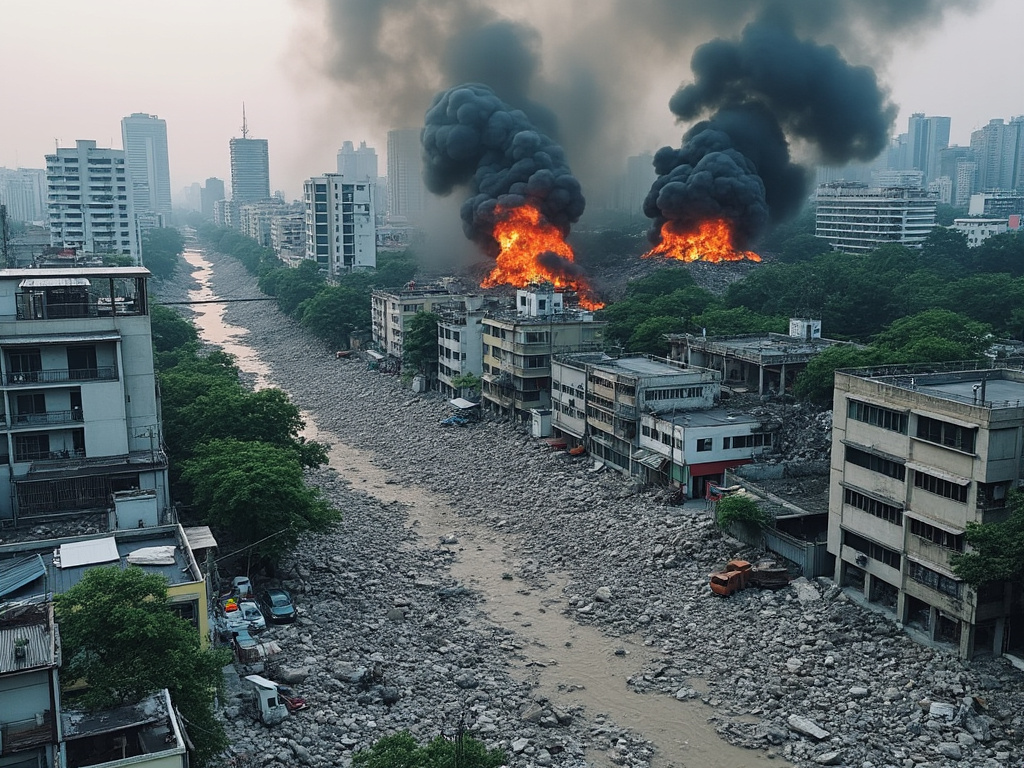
The search for survivors continues in Myanmar following a devastating 7.7-magnitude earthquake, which has claimed over 1,600 lives.
The search for survivors in Myanmar has entered a critical phase as rescuers work tirelessly in the aftermath of a powerful earthquake that struck the region on Friday, causing widespread destruction.
The earthquake, with a magnitude of 7.7, was centered near the cities of Mandalay and Sagaing, leading to the deaths of at least 1,644 people in Myanmar, while neighboring Thailand reported an additional 17 fatalities.
As rescue operations continue into their third day, communities surrounding the epicenter remain largely isolated, with reports indicating that essential aid has yet to arrive.
Roads, airports, and bridges have suffered significant damage, complicating efforts to reach those affected by the disaster.
Residents have expressed a sense of abandonment, stating that they feel "on their own" as they confront the extensive devastation.
Rescue workers, employing bare hands and basic tools, have been struggling to remove debris from collapsed structures, including residential buildings and temples.
There have been some instances of survival, such as a woman who was found alive after being trapped for 30 hours beneath rubble in one of the hardest-hit areas.
However, many families continue to face despair, with heartbreaking accounts emerging of individuals trapped with severe injuries, and entire groups, such as a class of young monks, believed to be buried under fallen buildings.
As the search efforts persist, hope for the survival of many remains tenuous.
Rescuers face time constraints as the likelihood of finding more survivors diminishes with each passing hour.
The focus remains on locating individuals who are still trapped, while the local population grapples with the psychological and physical aftermath of the disaster.
The earthquake, with a magnitude of 7.7, was centered near the cities of Mandalay and Sagaing, leading to the deaths of at least 1,644 people in Myanmar, while neighboring Thailand reported an additional 17 fatalities.
As rescue operations continue into their third day, communities surrounding the epicenter remain largely isolated, with reports indicating that essential aid has yet to arrive.
Roads, airports, and bridges have suffered significant damage, complicating efforts to reach those affected by the disaster.
Residents have expressed a sense of abandonment, stating that they feel "on their own" as they confront the extensive devastation.
Rescue workers, employing bare hands and basic tools, have been struggling to remove debris from collapsed structures, including residential buildings and temples.
There have been some instances of survival, such as a woman who was found alive after being trapped for 30 hours beneath rubble in one of the hardest-hit areas.
However, many families continue to face despair, with heartbreaking accounts emerging of individuals trapped with severe injuries, and entire groups, such as a class of young monks, believed to be buried under fallen buildings.
As the search efforts persist, hope for the survival of many remains tenuous.
Rescuers face time constraints as the likelihood of finding more survivors diminishes with each passing hour.
The focus remains on locating individuals who are still trapped, while the local population grapples with the psychological and physical aftermath of the disaster.





































